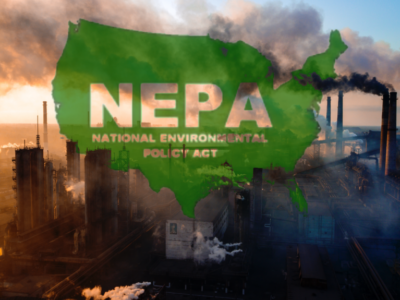Can NEPA change agency decisionmaking?
Environmental review can change agency incentives or culture
This is the fourth in a series of posts on the reasons we might have environmental review. The first post is here. The second post is here. The third post is here.
Another pathway by which environmental review might change outcomes, even with no legally binding substantive components, is through changing internal agency decisionmaking. The simplest version of this argument is that environmental review, by producing previously overlooked information about environmental impacts, causes agencies to reconsider their plans for projects, including by selecting less environmentally harmful alternatives to projects.
But that is perhaps a naïve assessment of how agencies function. NEPA was prompted in part by a belief that agencies were not sympathetic to environmental considerations. But if an agency doesn’t value environmental goals (for whatever reason), would the information just be useless paperwork?
There are two possibilities. First, not all government actions have to go through the full environmental review process. In fact, the vast majority of government actions do not go through a full environmental impact statement (EIS) but instead through some quicker environmental review process or through no environmental review at all. As Brad Karkkainen has noted, this creates a strong incentive for government agencies to design projects to avoid the EIS requirement, which can in turn result in agencies reducing the environmental impacts of projects. That can be beneficial for the environment. Karkkainen notes that agencies may use mitigation of environmental impacts for projects to avoid meeting the EIS requirement. But it is also possible that an agency may just avoid doing actions in general that might trigger the EIS requirement, and avoiding some actions (such as active management of forests to reduce fire risks) can be harmful from an environmental perspective as well.
Second, the environmental review requirement forces agencies to gather information and do analyses they hadn’t done before NEPA – and that includes hiring staff who are trained to gather that information or do that analysis. That new staff will not just have different skills – they may also have different perspectives that leads them to value environmental outcomes more highly. By adding this new staff to an agency, staff with a stronger interest in environmental outcomes, agency cultures may be shifted to become more concerned about environmental impacts. For instance, an agency that has focused on dams and other major water projects historically might be staffed by civil engineers whose skills and perspectives focus on constructing large infrastructure projects, but may not place much weight on the environmental impacts of those projects. But if NEPA requires that agency to study the impacts of their projects on fish species, the agency will have to hire fisheries scientists who likely do value fish species highly, and thus will bring that new perspective to inform internal agency decisionmaking. One scholar found such a dynamic in studying how environmental review changed outcomes at two federal agencies, the Army Corps of Engineers and the Forest Service.
Note that both of these dynamics are indirect ones – they do not result from substantive regulatory standards being imposed on agencies, nor are they outcomes that the statute explicitly articulates. But they may be important in changing agency decisions nonetheless.
Reader Comments
One Reply to “Can NEPA change agency decisionmaking?”
Comments are closed.






Organizations can change, but the Army Corps of Engineers and the Forest Service have been sued more times than any other federal agency for misapplying NEPA by using an environmental assessment when an environmental impact statement was required as determined by the courts. Lynton K. Caldwell’s 1982 book, Science and the National Environmental Policy Act, Redirecting Policy through Procedural Reform “describes how a procedural invention was enlisted to effect the major reorientation of public policy and administration required by the National Environmental Policy Act (NEPA) of 1969.” We need to take a 30,000-foot view and then ask how a court can take “a hard look” to determine if an agency complied with NEPA’s procedures unless it also assesses the agency’s final decision? NEPA is both procedural and substantive in spite of what the Supreme Court has ruled over the last 50 years.